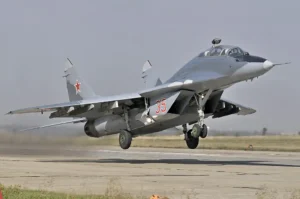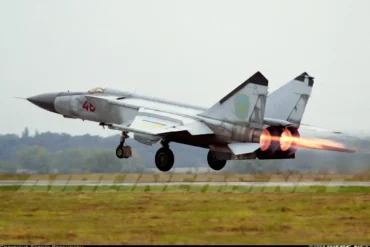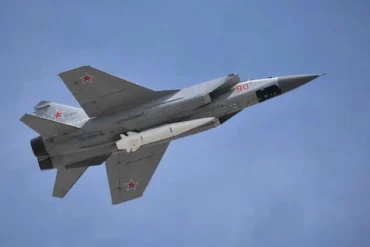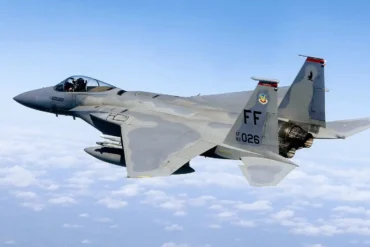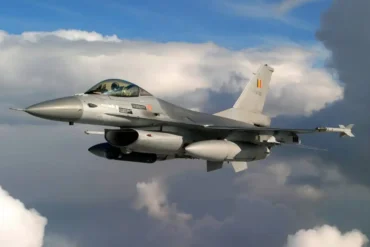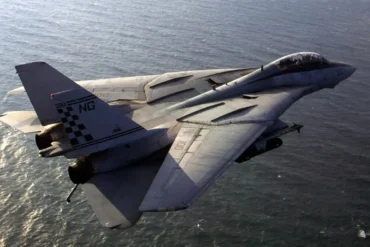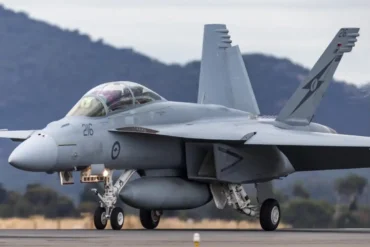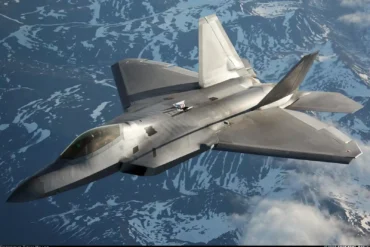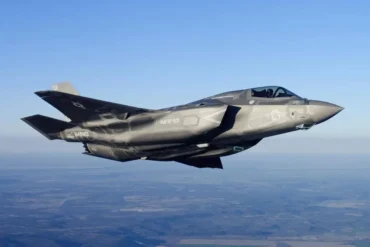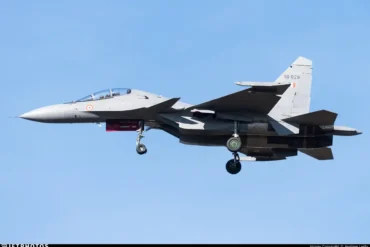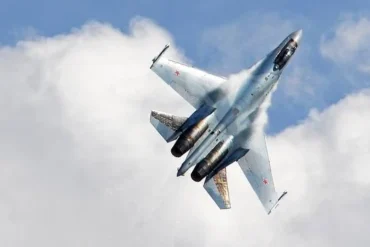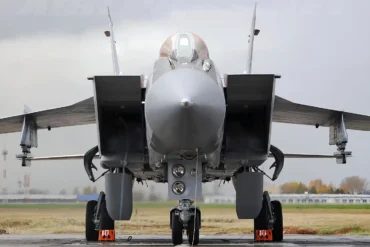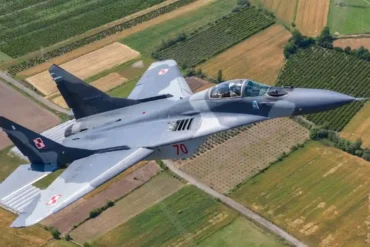The MiG-29, a renowned Soviet-designed fighter jet, has earned its place in military aviation history as one of the most versatile and powerful aircraft of its time. With over three decades of service and numerous upgrades, the MiG-29 has proven itself not only as a formidable adversary but also as a symbol of military prowess during the Cold War and beyond. This article explores 10 fascinating facts about the MiG-29, ranging from its cutting-edge design to its real-world performance and legacy in global aviation.
1. NATO Codename: Fulcrum and Its Cold War Mission
The MiG-29, with its NATO codename “Fulcrum”, was designed during the Cold War to be a direct competitor to the U.S. Air Force’s F-16 Fighting Falcon and F/A-18 Hornet. Its design emphasized superior maneuverability, acceleration, and climb rate, which made it ideal for close combat and interception missions. The MiG-29 quickly became a key component of the Soviet Union’s frontline fighter fleet, intended to counter the growing threat from NATO aircraft in the skies.
The MiG-29’s aerodynamic capabilities were carefully crafted to ensure dominance in high-speed dogfights and close-quarter combat. It was designed to deliver superior performance in a wide range of altitude and speed conditions, making it a versatile asset during its time of deployment.
2. Helmet-Mounted Sights and Off-Axis Attacks
The MiG-29 was among the first fighter jets to incorporate a helmet-mounted sight (HMS) system, which revolutionized aerial combat. This technology allowed the pilot to target and fire weapons without needing to align the aircraft with the enemy. Specifically, the MiG-29’s HMS worked in conjunction with the R-73 infrared-guided missile, providing an impressive capability to launch off-axis attacks at up to 45° angles from the aircraft’s centerline.
This advanced targeting system, in combination with the R-73 missile, provided pilots with an unprecedented advantage in close-range aerial combat, enabling them to track and engage targets in almost any direction, making the MiG-29 a fearsome opponent in dogfights.
3. The MiG-29’s Legendary Maneuverability
The MiG-29 is often referred to as the “airborne acrobat” due to its remarkable agility and handling characteristics. Capable of reaching a top speed of Mach 2.25 (approximately 2,500 km/h), the MiG-29 is not just fast; it is also highly maneuverable. The aircraft’s climb rate of 18,000 meters per minute is among the best in its class, allowing it to quickly gain altitude and gain the upper hand in combat situations.
The MiG-29’s aerodynamic design features a blending of the wing and fuselage, which reduces drag and improves lift. This design, paired with a low wing loading and high thrust-to-weight ratio, ensures that the MiG-29 can withstand up to 9 Gs of force during combat maneuvers. The result is an aircraft that can out-maneuver many adversaries in close-quarters dogfights.
4. The MiG-29’s Limited Range: The “Airport Defender”
Despite its impressive combat abilities, the MiG-29 has a relatively short operational range, with a combat radius of only around 2,100 kilometers. This limitation led to the nickname “airport defender” for the aircraft, as it was designed for quick, high-intensity strikes and defending forward operating airbases rather than engaging in long-range operations.
The MiG-29’s range limitations were a result of its design for deployment from forward airfields with minimal infrastructure. This made the aircraft dependent on ground-based command and control systems for navigation and mission coordination, further emphasizing its role as a short-range interceptor rather than a deep strike fighter.
5. India’s Custom MiG-29: Incorporating Israeli Ballistic Missiles
India, a long-time operator of the MiG-29, has made significant modifications to the aircraft to suit its evolving defense needs. One of the most noteworthy upgrades is the integration of Israeli “Rampage” air-launched ballistic missiles. These missiles have a range of 160-300 kilometers and a 150-kilogram warhead, allowing the MiG-29 to perform long-range strike missions that were previously beyond the capabilities of the standard MiG-29 configuration.
This adaptation demonstrates the MiG-29’s versatility and potential for multi-role operations, extending its mission capabilities beyond the original design and breaking away from the traditional Soviet weaponry found on earlier MiG-29 variants.
6. The Ukrainian MiG-29: The Kyiv Phantom
In recent years, Ukraine has made significant upgrades to its fleet of MiG-29s, particularly the MU1/MU2 variants. These upgrades include the incorporation of NATO-compatible navigation systems, along with the addition of Kh-29T air-to-ground missiles and AGM-88 anti-radiation missiles. These enhancements make the MiG-29 more effective in electronic warfare and counter-radar operations.
The MiG-29’s modernized versions are particularly effective at disrupting enemy radar systems and intercepting hostile aircraft in contested airspaces. Even more impressively, Ukraine has managed to revive older MiG-29s that were sent abroad for repairs, showcasing the aircraft’s adaptability and long service life.
7. Combat Record: Highs and Lows
The MiG-29 has experienced both successes and setbacks in combat situations. One of its most notable victories came during the Gulf War, where Iraqi MiG-29s managed to shoot down U.S. F/A-18 Hornets. However, due to the MiG-29’s reliance on ground-based command systems for target acquisition, many MiG-29s were easily targeted and destroyed by long-range American fighters like the F-15 Eagle.
In contrast, during the Kosovo War, Serbian MiG-29s showed their capability, managing to score several kills against NATO aircraft despite overwhelming technological disadvantages. These incidents highlight both the MiG-29’s effectiveness in the right hands and its vulnerability in modern air combat scenarios.
8. The Global Reach of the MiG-29: A World-Wide Success
Since its inception, over 1,282 MiG-29s have been produced, with the aircraft serving in 30+ countries around the world. Notable operators include Russia, which has over 450 MiG-29s, India, North Korea, and Ukraine, along with various nations in Africa and South America. The MiG-29 has proven to be a reliable workhorse for air forces in both established and emerging markets, demonstrating its global appeal.
The aircraft’s widespread use and continued upgrades highlight its long-lasting influence on global aviation and military strategy.
9. The Chinese J-10: A MiG-29’s Legacy
Though China never directly operated the MiG-29, many of the MiG-29’s design elements were incorporated into the development of the J-10, China’s domestic multirole fighter. In the 1990s, as part of military cooperation between the Soviet Union and China, certain technological innovations and design philosophies from the MiG-29 were utilized in the J-10’s development.
This technological inheritance further cements the MiG-29’s legacy in modern military aviation, as the J-10 is now a key component of China’s air force.
10. The MiG-29 in Pop Culture and Museums
Over the years, retired MiG-29s have found new life in military museums around the world, where they serve as a testament to the aircraft’s historical significance. The MiG-29 has also inspired models and fictional portrayals in popular culture, from military video games to science fiction films.
One example includes a model by a Japanese manufacturer, which creatively reimagined the MiG-29 as a tactical mecha armed with chainsaws and assault cannons, blending the aircraft’s iconic design with futuristic elements.
Conclusion: A Timeless Fighter
The MiG-29 remains a symbol of military aviation excellence, known for its remarkable maneuverability, combat effectiveness, and global legacy. From its Cold War origins to its modern-day upgrades, the MiG-29 continues to evolve and adapt, proving itself to be more than just a relic of the past. With numerous countries still operating the MiG-29, and with ongoing innovations in its design, the aircraft is destined to remain a key player in military aviation for years to come.
